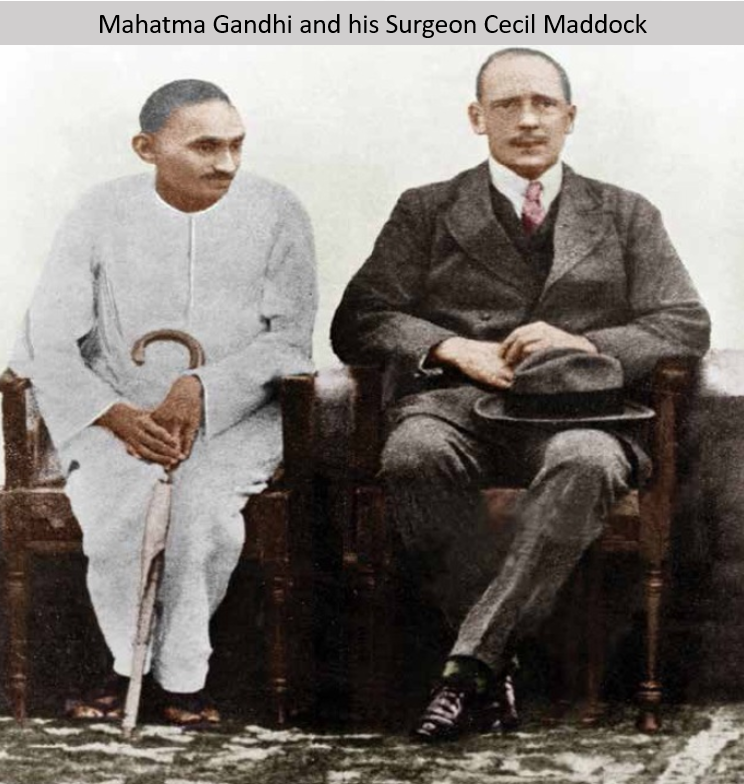
Mahatma Gandhi’s Emergency Appendectomy: An Interesting Tale
On January 12, 1924, Mahatma Gandhi underwent an emergency appendectomy at Sassoon Hospital in Pune. The story behind his operation is quite interesting.
On January 8, 1924, Gandhiji experienced fever, abdominal pain, and nausea while in Yerawada jail. He was released and admitted to the Sassoon General Hospital in Pune. Little did he know what lay ahead—a surgery to remove his appendix and a hospital stay of eight weeks.
During that time, there were no ultrasounds, CT imaging, or blood tests for diagnosis. If a surgeon suspected an inflamed appendix, their diagnosis was unquestioned. There was no room for doubt.
Dr. Cecil Maddock, the Civil Surgeon of Sassoon Hospital, examined him on January 12 and personally drove him to the hospital for the urgent operation.
Mahatma Gandhi requested Dr. AK Dalal and Dr. Jivraj Mehta to perform the surgery. Dr. Dalal had successfully operated on him for piles in January 1919. The British government agreed, but the doctors had to travel from Mumbai, and Mr Nitin Gadkari had not designed an expressway between Mumbai and Pune at the time.

As midnight approached, Dr. Maddock, the British surgeon, informed Gandhi that the surgery could not be delayed any longer to prevent the risk of peritonitis. Sensing the urgency, Gandhiji signed an informed consent form, authorizing the British surgeon to proceed with the scalpel.
At Gandhi’s request, VS Srinivasa Sastry and Dr. VD Phatak joined him to draft a public statement. The statement emphasized that Gandhiji’s decision to undergo the operation was entirely voluntary and not influenced by any external pressure. He expressed his willingness to be operated on by a British surgeon and urged the public to remain calm even if the operation failed.
The stakes were high. The success or failure of the operation could lead to mass protests and unrest.
With the declaration drafted, Mahatma Gandhi sat with his knees drawn up and signed it in pencil. He jokingly remarked to Maddock about his trembling hand, saying, “You will have to put this right.”
To ensure Gandhiji experienced no pain, Dr. Date, the chief anaesthesiologist, administered open drop chloroform. However, just as the surgeon was about to make the incision, the electricity suddenly went out, plunging the room into darkness. Undeterred, one of the nurses held a flashlight, which unfortunately flickered and died.
A kerosene lamp was brought into the operating theatre. Maddock completed the operation under its dim light. The room held its breath as the fate of a nation hung in the balance. Dr. V.D. Phatak from Poona was also present during the surgery.
In the dim light of the makeshift theatre, it was challenging to determine if the appendix was truly inflamed. Colonel Maddock carefully removed the appendix and skilfully sutured the wound.
As the operation concluded, Mahatma Gandhi, still under the influence of anaesthesia, expressed his deep gratitude to the surgeon.

At that time, the efficiency of the hospital was not measured by the length of the hospital stay, and there were no demands for minimal stays from insurance companies. Gandhiji remained in Sassoon Hospital for six weeks following the operation. The duration of the hospital stay did not matter in those days.
This is how VIPs were treated a hundred years ago—no fuss, no VIP status—just a heartfelt “Thank you” in return.
